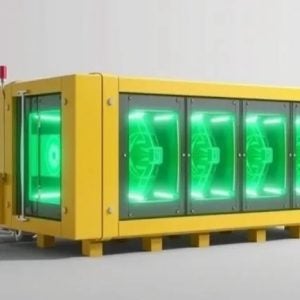European Union (EU) funding for research on nuclear energy-related activities is channelled through the Euratom Framework Programme (FP), a multi-annual programme under the Euratom Treaty. Geological disposal research has been an FP priority since the 1980s. Over the years, some EUR300 million have been provided to support member states’ national programmes, covering basic studies and phenomenology in the early years, to large-scale demonstrations in underground research laboratories and licensing-related issues in more recent programmes. In the 7th Euratom FP (2007-2011), the focus is increasingly ‘implementation oriented’.
The scientific case for geological disposal is beyond question. The Nuclear Energy Agency’s 2008 policy statement, ‘Moving forward with geological disposal of radioactive waste’ sums up the thinking of the technical community. However, this does not mean R&D is no longer needed – far from it. Each geological repository will be a one-off high-tech construction adapted to its geological environment. R&D remains crucial to develop appropriate engineering, investigate possible rare phenomena, and further reduce uncertainties regarding long-term safety.
EU research funding has more than purely scientific objectives. The long-term aim is to establish a true ‘single market’ – the European research area (ERA) – ensuring adequate public and private investment, critical mass in key fields, reduced fragmentation and free circulation of knowledge. One important vehicle is the technology platform. Some 30-40 of these, in a variety of technical areas, have been launched to stimulate the research-innovation cycle, and make better use of resources by bringing R&D stakeholders together around a common vision for future developments in a particular field. Platform members jointly decide a strategic research agenda and accompanying deployment strategy to realise this vision, with industry, or technology end-users, playing a key role as the driving force.
The Euratom FP has been instrumental in establishing two technology platforms. The Sustainable Nuclear Energy Technology Platform (www.snetp.eu) launched in September 2007 assembles some 75 industrial, research and academic organisations across 19 countries around a vision for future R&D in nuclear systems and safety. Then, in November 2009, the Implementing Geological Disposal Technology Platform (www.igdtp.eu) was launched, bringing together key implementers and other stakeholders around a vision for the remaining R&D to implement geological disposal in Europe.
An interim executive group comprising SKB, Posiva, Andra (Swedish, Finnish and French radioactive waste management organisations) and BMWi (German Federal Ministry of Economics and Technology) were largely responsible for pre-launch preparations and drafting the crucial vision document. These four countries represent the most advanced programmes in Europe. Both Finland and Sweden have selected their disposal sites. Finland started construction work in 2004, with repository operations foreseen from 2020. In France, the decision-making process foresees site selection by 2013-14, with operation by 2025. Germany has a well-developed disposal concept and infrastructure, and recent policy shifts could unblock the political situation. However, other member states are less well advanced, either in their overall strategy, disposal concept, political process, or all three.
The platform will foster joint research, development and demonstration on implementation and licensing issues. It will build confidence in geological disposal solutions and promote technology transfer between advanced and less advanced national programmes. It can also provide a unified technical voice in the on-going socio-political debate, which is still hindering progress in many countries. Public opinion is of course crucial, as is clear from the results of regular Eurobarometer surveys on radioactive waste carried out by the European Commission in 2008, 2005, 2001 & 1998.
The platform’s vision is clearly summarised in the vision document: By 2025, the first geological disposal facilities for spent fuel, high-level waste, and other long-lived radioactive waste will be operating safely in Europe. I am convinced these will be the World’s first such facilities, indicating the progress Europe is making on both the technical and socio-political fronts, and the responsible management of the back end of the nuclear fuel cycle. Other European countries will follow those above, and all can benefit from the momentum afforded by this platform.
However, the platform can deliver only if members remain committed and willing to pool resources to further the common agenda. The launch event was a promising start, but momentum must be carried forward into real platform operations, starting in earnest in early 2010. This is an open forum that welcomes all stakeholders who recognise that geological disposal is the end point for ‘ultimate’ waste. Since the focus is implementation, waste management organisations must be the driving force. Nonetheless, there are still scientific and technical issues to resolve, and Europe’s principal research organisations – of which there are several with invaluable expertise and knowledge in this field – must be on board. Technical safety organisations also play a crucial role, especially in view of their close links with regulatory authorities.
In addition, next year, the European Commission may bring forward a proposal for binding legislation in the area of radioactive waste, focusing on establishing national programmes and the need to develop geological repositories. The push towards geological disposal in Europe is therefore gaining momentum on all fronts.
Author Info:
By Simon Webster, Head of Unit ‘Fission’, Directorate-General for Research, European Commission, Brussels, Belgium. The views expressed are not necessarily those of the EU.
Related ArticlesConstruction start at Sanmen 2 EnergySolutions wins UAE nuclear contract World survey part 3: Asia Commissioning begins of second Ling Ao II unit Yangjiang’s safety net






